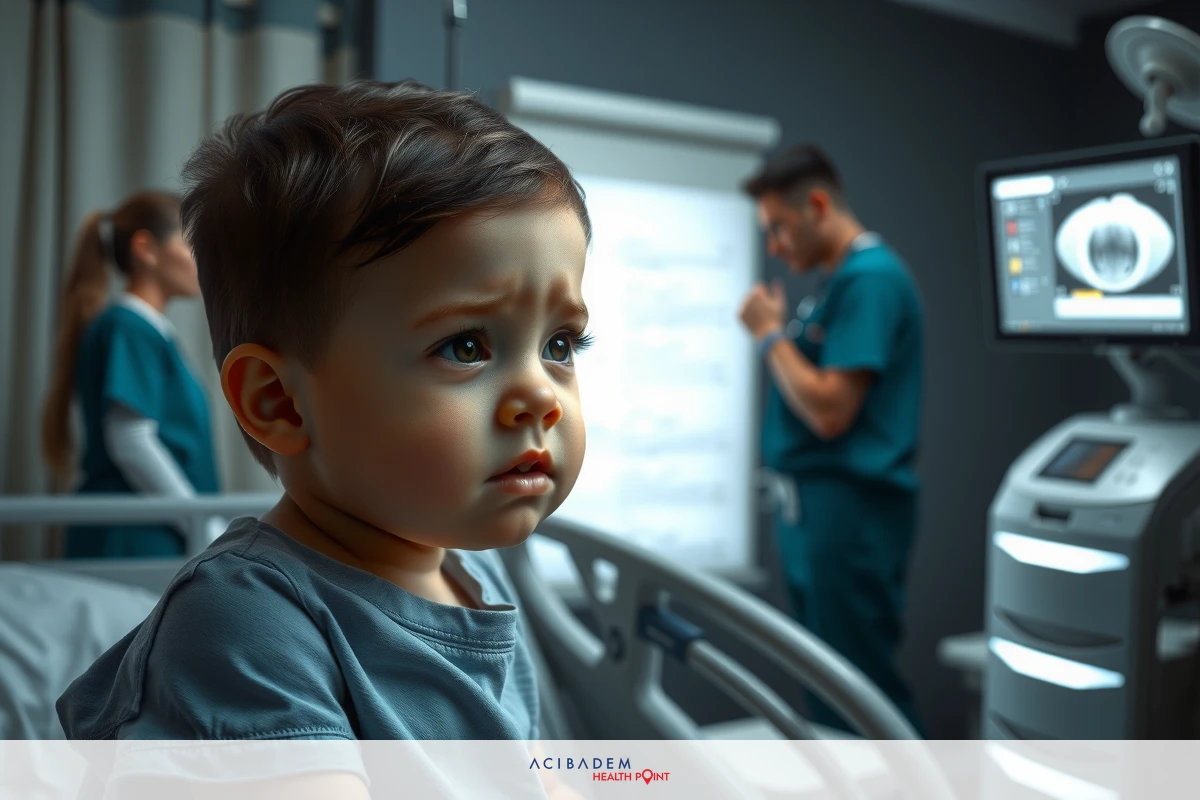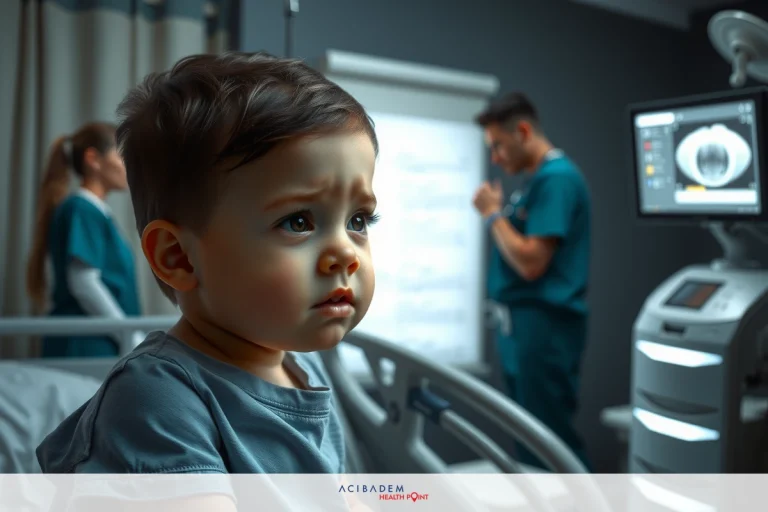How is neuroblastoma diagnosed? When a child feels unwell it’s important to find out why. Doctors start by looking for signs of illness. They ask about symptoms and may feel for lumps in the belly. If they think it could be neuroblastoma more checks are done.
Medical teams use special tests to look inside the body. Machines like MRIs and CT scans take pictures of what’s going on. These images help doctors see if there is a tumor and where it is.
If the scans show something doctors might need to test a small piece of it. They take a little bit from the tumor called a biopsy to study closer. It helps them know for sure if it’s neuroblastoma so they can plan how to treat it.
Symptoms and Signs
Neuroblastoma is a type of cancer that mostly affects children. It starts in certain very early forms of nerve cells found in an embryo or fetus. This term from pediatric oncology refers to a tumor that begins most often in the adrenal glands. It can also start in nerve tissues in the neck, chest, abdomen, or pelvis.
The symptoms of neuroblastoma may be hard to spot at first. They can seem like common childhood illnesses which makes diagnosis difficult sometimes. A child might have a swollen belly or feel pain where the tumor is growing. They could also be tired and not want to eat much.
Some signs are more serious like lumps under the skin which may not hurt when touched. If neuroblastoma spreads it could make bones hurt and lead to broken bones without any clear reason. Children with this illness might also have droopy eyelids and small pupils.
It’s important for doctors to check these symptoms because they could point to neuroblastoma or other conditions too. Parents who notice these signs should talk with their doctor right away for help with diagnosis and care options available.
Diagnostic Tests
Healthcare providers have a range of tests to help diagnose neuroblastoma in children. The first step often involves blood and urine tests. These can show if there are any unusual substances that the tumor might make. They’re pretty simple and don’t hurt but they give doctors key clues.
If those initial tests suggest something’s not right imaging tests may be next on the list. These include ultrasounds, X-rays, CT scans, MRIs or even MIBG scans which are specific for this type of cancer. Each one lets doctors see inside without having to do surgery.
Sometimes they need more detailed information about what’s happening with the cells themselves. That’s when a biopsy is done where they take a tiny piece of the growth for closer examination under a microscope.
Further specialized tests could include bone marrow biopsies or PET scans especially if there’s concern about spread of disease. This helps form an overall picture of how advanced the neuroblastoma is and aids in planning treatment effectively.
Imaging Techniques
Imaging techniques are vital tools in the diagnosis of neuroblastoma. MRI, or Magnetic Resonance Imaging, uses powerful magnets and radio waves to create detailed images. This doesn’t hurt at all but can be loud and
takes some time while the child lies still.

CT scans, or Computed Tomography scans, use X-rays to make pictures that show doctors cross-sections of the body. They’re faster than MRIs and really good at showing where a tumor is and how big it is. Kids might need to hold their breath for a short bit during this scan.
Another imaging test used for neuroblastoma is an MIBG scan which stands out because it uses a special dye that gets taken up by certain tumors. This makes them light up on the scan so they’re easier for doctors to see. It’s one more piece of info they use to understand what’s going on with children facing this illness.
Biopsy Procedure
A biopsy is a medical procedure used to confirm the diagnosis of neuroblastoma. It involves taking a small sample of tissue from the suspected tumor area. This is done by a surgeon or an interventional radiologist who specializes in these types of procedures.
The process begins with preparing the child for surgery ensuring they are comfortable and safe. The doctors use imaging techniques like ultrasound or CT scans to guide them during the biopsy. They make sure they take cells from just the right spot where they suspect cancer might be. How is neuroblastoma diagnosed
Once the sample is taken it’s sent off to a laboratory that specializes in looking at cells closely. Pathologists examine this sample under microscopes for signs that tell if it’s neuroblastoma. They look at how cells are shaped and arranged which can give away whether it’s cancerous. How is neuroblastoma diagnosed
It sometimes takes several days to get results back from a biopsy because tests are thorough and detailed. These findings help doctors decide what kind of treatment will work best for each child with neuroblastoma. Understanding this part of diagnosis helps parents know what their kids might go through on their journey.
Treatment Options
Once a diagnosis of neuroblastoma is confirmed the next step is exploring treatment options. It’s important to talk with your healthcare provider about what treatments are best for your child. They will consider the stage of the cancer, where it is in the body, and how fast it’s growing.
Treatment may involve surgery to remove as much of the tumor as possible. This can sometimes be all that’s needed if caught early enough. But often other treatments like chemotherapy or radiation therapy might follow to kill any remaining cancer cells.
Chemotherapy uses drugs to destroy cancer cells and stop them from growing more tumors elsewhere in the body. It can make kids feel tired or sick but helps fight off the disease. Your doctor will tell you how long treatment should last based on your child’s specific case.
Radiation therapy targets tumors with high-energy rays that also aim to kill lingering cancer cells after surgery. Your healthcare provider may also discuss newer forms of treatment like immunotherapy which helps boost a child’s own immune system.
Frequently Asked Questions
What age group is most commonly affected by neuroblastoma?
Neuroblastoma usually occurs in children under the age of 5 with most cases diagnosed before a child turns 2.
Can neuroblastoma be detected before birth?
Yes, sometimes neuroblastoma can be found through prenatal ultrasounds, but it's more often diagnosed after birth when symptoms appear.
Are there any risk factors or causes of neuroblastoma that parents should know about?
The exact cause of neuroblastoma isn't known. There are few identified risk factors and it's generally not thought to be inherited.









